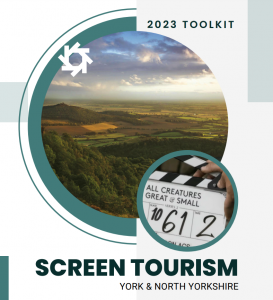
How to write a design brief for an agency
A well-written design brief is the foundation of any successful collaboration between your business and a design agency. It serves as a roadmap, ensuring that your vision and expectations are effectively communicated to the agency. In this brief guide, we’ll outline the key elements to include when writing a design brief for an agency.

Introduction and background
Begin with an introduction that provides an overview of your company, its mission, and the project’s context. Include essential background information such as your industry, target audience, brand guidelines (if you have them), and any previous design work related to the project.
Set project objectives
Clearly state the objectives you want to achieve with the design project. What specific goals or outcomes are you aiming for? Whether it’s branding, a website redesign, or packaging design, the objectives should be specific, measurable, and realistic.
Target audience
Describe your target audience in detail. Who are they? What are their demographics (age, gender, location)? What are their interests, needs, and preferences? Understanding your audience is crucial for designing effectively.
Scope of work
Define the scope of the project. What are the deliverables you expect from the agency? This could include logo design, website pages, brochures, social media graphics, or any other design assets. Specify any constraints or limitations that may affect the project’s scope, such as budget, timeline, or technical requirements. Be as specific as you can be in this section as it will directly impact the timeline and cost.
Brand guidelines (if you have them)
If your company has established brand guidelines, provide them to the agency. These guidelines may include details on logo usage, colour palettes, photography use, fonts and typography, and tone of voice. Ensuring consistency with your existing brand is crucial for brand recognition.
Alongside this, share your design preferences and inspirations that are relevant to this project. Are there specific styles, colours, or visual elements you’d like the agency to consider? Provide examples of campaigns, designs or brands that are similar to what you want to achieve.
Content and assets
Specify what content and assets you will provide to the agency. This may include text, images, graphics, or any other materials necessary for the project. Be clear on which areas the agency is responsible for content creation, and when you’ll provide it.
Budget and timeline
Outline your budget for the project and your preferred payment schedule. Additionally, provide a realistic timeline for project milestones, including deadlines for drafts, revisions, and final deliverables. This helps manage expectations and helps ensure a smoother workflow.
Communication and feedback
Explain the communication process and how feedback will be handled. Establish a lead contact on your end who will co-ordinate with the agency and provide feedback, including collating feedback from stakeholders in your company. Agree regular meetings to review project progress. Effective communication is crucial to project success – both with the agency, and within your business. Make sure internal stakeholders are informed of the timelines and progress, including when they are expected to contribute to the process through sharing information or reviewing drafts.
Review and approval
Detail the process for reviewing and approving design concepts and drafts. Define who has decision-making authority and specify the number of rounds of revisions included in the project scope. Internally, be clear about who will comment on the project, and who has final say and sign-off.
A well-structured design brief is essential for guiding the agency towards successfully delivering your project. By including these key elements in your design brief, you provide clarity, direction, and a solid foundation for collaboration. Remember that open, regular communication with your agency is key to achieving the design outcome you need.

Learn more
Learn the basics of writing a marketing plan
Secure your place: Business Support Programmes 2024
The Growth Hub is hard at work curating a new package of business support programmes for 2024. The programmes will be available to businesses located in North Yorkshire, funded by North Yorkshire Council’s Shared Prosperity Fund.
Choosing your online marketing channels
To help you make the right choices for your business, let’s go over some of the options available to you. It’s important to consider the pros and cons for each marketing channel and whether the channel is a good fit with your target audience. Email marketing There’s often confusion about whether email is inbound or
Introducing Meld: North Yorkshire's new Business Community
Meld is a new community for people starting and running businesses in North Yorkshire. The team behind the project are building Meld to be a melting pot of ideas, support, advice, nice people and cool businesses. We hope this becomes a place you come to mix. connect. belong… and build.
Businesses given digital skills boost
Two Digital Transformation Days took place in Scarborough and Pickering, featuring expert insight from industry leaders. Hosted by York & North Yorkshire Growth Hub, around 50 businesses attended the free events. Coaches from Google Digital Garage led sessions on both days.
Digital Transformation Days Set to Empower Yorkshire Coast Businesses
Business owners and marketing managers in the Yorkshire Coast region are gearing up to take their digital offer to the next level as the York & North Yorkshire Growth Hub prepares to host two Digital Transformation Days, in collaboration with Google Digital Garage.
Business Support Programme: 1:1 Social Media Support with Catch Design
Businesses in North Yorkshire have the chance to supercharge their social media and dial up their digital marketing with fully funded 1:1 bespoke support from industry expert Sue Thompson of Catch Design Management.
How to create a profitable website and generate leads
Learn how to create a profitable website that can serve as a powerful tool to attract customers, generate leads, and increase revenue.
How to Sell Goods or Services to the Public Sector
Increase your customer base and increase revenue by learning how to successfully sell goods or services to the public sector with our expert advice.
Marketing for start-ups: A beginner’s guide
Marketing for start-ups can leave your head spinning, especially if marketing is new to you. Here’s a quick and easy guide to getting started with marketing for start-ups. How to make a plan when marketing for start-ups The best place to start with your marketing strategy as a start-up business owner is to make a
How to create free publicity as a small business
Advertising for small business can be a complex and is often one of the biggest costs you have to cover.
How to keep your business pitch simple
Like most other communication, keep your business pitch simple, informative and fun.
Customer relationship management tools
There are lots of great customer relationship management (CRM) tools out there that you could use in your business.
Fire up your Food and Drink business with Make it! toolkits
A free video toolkit to help growing food and drink businesses in York and North Yorkshire. Essential ingredients for food and drink business success.
Screen Tourism Toolkit
A free screen tourism toolkit exploring the opportunities, showing best practice and connecting business with resources and support.
2022 Seminar Recordings
We have recently hosted a programme of in-person seminars and other events, some of which were professionally recorded and can now be viewed on our website.
Seminar Recording : Access to finance: Funding growth
This workshop will provide guidance on cost based pricing, calculating your costs before deciding an appropriate margin, as well as covering market based pricing asking questions such as: What value do you add? What are you worth? How do you position yourself?
Growthbox marketing service
The York & North Yorkshire Growth Hub are working with Growthbox, who help small businesses work out what marketing to do and connect them with their growing army of marketing experts all across the UK who can help them get it done.
Cookies and privacy notices: do I need them on my website?
This webinar will cover what cookies are and what cookie law is, what a privacy notice is, the laws surrounding both, and how to ensure you are being transparent to your customers when creating a cookie policy and privacy notice.
An introduction to sales
This webinar will help you get sales confident by providing tips and guidance on mastering important communication skills.
Free Webinar : How to be a LinkedIn 'All-Star'
This webinar will explore how you can use LinkedIn as a part of your social media strategy, helping you to create connections and make an excellent first impression.
Free Webinar - Customer Retention Marketing
This webinar will provide you with practical tips to help you retain your customers and build a relationship with your audience.
Webinar: Capitalising on your social media impacts
This webinar will provide you with guidance on how to move ahead with your marketing strategies in our current climate, to ensure that you maximise on the opportunities presented by new social media trends in 2021 and beyond.
Leadership Series: Empowering your team – learning to delegate and let go
This free webinar will help leaders consider what gets in the way of delegation and how important it is to empower the team to deliver on your behalf.
Wellbeing Series: Supporting return to work
This free webinar with the University of York will introduce a return to work toolkit for managers and team members.

























